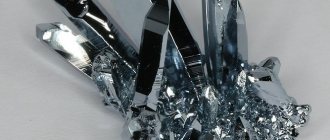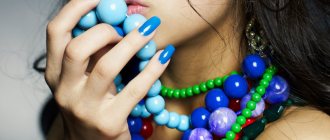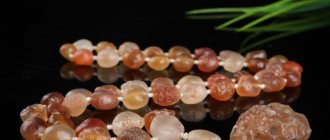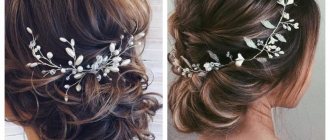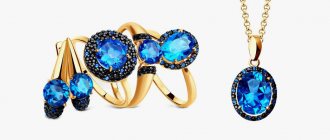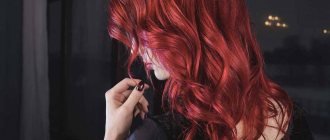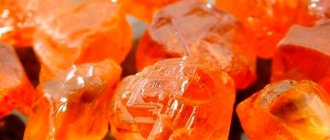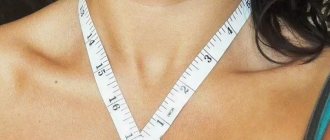Every girl and woman has a box with jewelry for her head. Using beautiful accessories, you can always add a thematic touch and elegance to your hairstyle. Even mature ladies do not deny themselves the pleasure of decorating their hair with a hairpin or headband. A distinctive feature of such products is the presence of natural stones and precious metal.
The desire to decorate the head has been traced since ancient times, when stately persons complemented their costumes with kokoshniks, tiaras, and headbands. Even commoners did not deny themselves decorations made of fresh flowers or satin ribbons.
It is not always possible to find a hair accessory that matches a suit in a store, so many women show talent and imagination by making various jewelry with their own hands. The result surprises even professional craftsmen. Having mastered several techniques, you can create real masterpieces at home that you cannot pass by indifferently.
Varieties
Most of the accessories meet the requirements of multitasking. They not only serve as the finishing touch to the look, but also allow the hairstyle to stay in place. Often there are exclusively decorative elements. Therefore, consider the functional features of the product before creating or purchasing.
Modern fashion has many types and styles of head jewelry. For example, the eastern style is characterized by the use of floral motifs, large stones, and national symbols. Popular jewelry of this style are tika and lalatika.
The Greek style involves the use of headbands and headbands that stand out on the forehead and collect the hair at the back. Looks especially impressive on curly hair.
Hairpins
Hairpins are considered to be a base with a mechanical type clamp. On top they can be decorated with bows, metal appliqués, stones, and plastic elements. Depending on the thickness and type of hair, you can choose one suitable for both adult women and girls.
In addition to standard mechanical hairpins, hairpins with clips are popular. They are suitable for those with short hairstyles that do not hold regular hairpins.
The assortment is huge: crabs, brooch pins, heagami, banana clips.
The meaning of bindi
The tradition of using bindis in India has been lost for thousands of years.
The red dot, symbolizing the rising sun, was applied to her forehead in the Rig Veda by the goddess of the morning, Usha, thus greeting her husband, the sun god Surya.
Tilaka is mentioned in many ancient legends, tales and myths: for example, this sign could become fiery in heroes or, on the contrary, be erased from the forehead as an indicator of extreme despair and disappointment. The bindi is considered a sign of future prosperity and gives a woman a place in her family.
The area on the forehead between the eyebrows where the bindi is placed is known as the location of the sixth chakra, "ajna", "third eye" and the seat of "hidden wisdom". According to followers of Tantrism, this place is the point of release of the kundalini energy, and the bindi is placed there to preserve and enhance the concentration of this energy, as well as to protect against demons or bad luck.
An Indian bride crosses the threshold of her husband's house, dressed in sparkling robes and jewelry, with a dazzling red bindi on her forehead. It is believed that after marriage, a woman’s main responsibility is to take care of her near and dear ones. The red dot, on the one hand, symbolizes the luck of a married woman and brings prosperity, and on the other hand, reminds her of the need to maintain the sanctity of marriage.
Girls and unmarried girls, as well as widows, either did not wear bindis or were content with black dots. For example, among widows, the absence of a bindi could be a sign that the woman was in mourning. However, in southern India, girls also wore bindis.
Combs
The history of the use of these accessories dates back to ancient times. And to this day they are very popular.
You can make this head decoration from anything: wood, bones, metal. The base of the comb can be complemented with flowers, rhinestones, and stones.
Combs allow you not only to fix your hairstyle, but also to secure flowers or a wedding veil.
What is it made of?
Traditional bindis are red or maroon in color.
With the help of a pinch of cinnabar (another name, vermilion - a mineral, scarlet mercury sulfide) on the tip of her finger, with the proper skill, an Indian woman can easily create a perfectly smooth bindi. But this art is not accessible to everyone, and some losers have to resort to various tricks to obtain a perfectly even circle. Hollow disks or coins with a hole are used. The disc is attached to the forehead using wax, bindi dye is applied to the hole, and then the disc is removed.
In addition to cinnabar, the materials used to make tilak are sindoor (lead oxide, otherwise known as red lead), ox blood, red powder - abir mixed with yogurt and rice flour, red dye turmeric, made from the turmeric plant, mixed with lemon juice, powdered sugar mixed with honey and non-toxic glue, saffron with flower pollen... - in general, women's imagination in this area is truly limitless.
Bandages
An original accessory that combines decorative and practical functions. Various materials are used to make headbands: satin, silk, knitwear. There are no restrictions on the width of the strips. So, cotton products are very practical to wear in summer, and knitted woolen ones in winter.
To decorate the headband, you can use decorative elements:
- Beads
- Stones
- Flowers
- Bows
Ribbons
This accessory is practically no different from headbands. It is made in addition to the outfit from the same fabric. You can get creative and tie the ribbons in different ways. Or braid it if your hair length allows.
Decorations for ribbons can be used similar to headbands.
Protection from Navi spirits
According to the beliefs of the ancient Slavs, evil spirits could penetrate inside a person through unprotected parts of the body. To prevent this, special amulets were used. The Slavs wore bracelets on their wrists. The body itself was protected with an embroidered belt. The most important part, the head, was protected by a headband. It was this kind of bandage that was considered the main barrier against the penetration of evil spirits into the human body. Hostile forces in Rus' were recognized as Navi spirits, that is, evil entities of the other world. Such spirits could cause illness, failure, and poverty. It was believed that the headband protects a person from damage, the evil eye, and curses.
Russians were warned about a 78% rise in wholesale sugar prices
Who really was Ivan Fedorov and why did he escape from Moscow to Lithuania?
SpaceX unwittingly proved that there was no landing of US astronauts on the moon
In most areas, only women wove headbands. Men ordered such garters for their wives, mothers or sisters. The only exception in some cases were boys. Sometimes they could weave their own headbands. The Slavs began wearing a headband from childhood. Very young children were knitted with very simple headbands without ornament. From the age of 7, children could already wear garters with patterns.
Tiaras
This is the most regal decoration, as the tiara is considered a sophisticated variation of the crown. This attribute has long been characteristic of the male sex. Since biblical times, they have been used to decorate the heads of high priests, then priests and ancient rulers of Asia.
The base is made of metal, plastic and inlaid with stones. They are popular among brides, at New Year's and themed parties.
Headband with flowers (quick method)
Necessary materials:
- Blank rim
- Glue
- Flowers
- Satin ribbons
DIY beads: a master class on creating an original and stylish decoration- Decorating gifts - interesting ideas and how to implement them yourself (instructions + video)
- Leather jewelry: master class on how to make stylish jewelry for beginners
To begin, take the blank and wrap it with tape in a spiral. Glue it in several places, this will hold the coils in place. Glue flowers in the right places. Fasten the tape well at the ends of the headband. The decoration is ready.
You can make flowers by hand or buy ready-made arrangements at a craft store. Instead of flowers, you can use bows, stones or other elements.
In conclusion, we note that head decorations can add a special chic if they are chosen correctly and combined with other accessories.
How to make it yourself
Lalatika
To make an oriental decoration you will need the following materials:
- pendant or pendant;
- dense thread or fishing line;
- beads with small pearls or beads:
- small pendants (coins).
Instructions:
- Make a blank from fishing line. To do this you need to connect two threads. The length of one should be equal to the circumference of the head, the other should be the distance from the frontal part to the middle of the back of the head. The result will be a T-shaped thread.
- Attach the pendant at the connection point of the fishing line.
- On the thread that determines the circumference of the head, string beads on both sides.
- String beads onto a fishing line covering the parting.
- Connect the threads, decorating the joining place with large beads. This point will be located on the back of the head, but the connection still needs to be masked.
- Attach small pendants to the fishing line that determines the circumference of the head at intervals of 3-4 cm.
The finished product should follow the contours of the head without sliding to the sides. Additionally, you can secure the accessory to the tanks with invisible ones if you plan to perform dance or rhythmic movements.
Flower headband
For work you will need the following materials:
- blank rim;
- artificial flowers;
- felt scraps;
- satin ribbon;
- thin ribbons of different colors;
- glue (it is recommended to use the hot type).
Instructions:
- Cut off buds (to the very base), leaves, and beautiful fragments of twigs from artificial flowers.
- Carefully wrap the base of the headband with satin ribbon, masking the ends. Secure each turn with glue. You can continue working only after the surface has dried.
- Place the decorative blanks into the composition (on the table). On the rim, this fragment will be located on one side.
- Glue a base of a piece of felt onto each element of the selected decor. Let it dry.
- Alternately fix the composition on the base of the hoop.
- Complete the decor with bows of multi-colored thin ribbons to create volume.
Hair flower
For work you will need the following materials:
- a simple hairpin that fits the size;
- hot glue;
- a piece of felt;
- artificial flower;
- beads.
Instructions:
- Degrease the surface of the hairpin with a cotton pad soaked in nail polish remover.
- Cut a small circle from a piece of felt and glue it to the base of the flower.
- Attach the flower to the hairpin using adhesive.
- In a chaotic manner, fix small beads along the platform of the accessory.
Decorative comb
To make a beautiful decoration you will need:
- regular plastic comb;
- artificial flowers;
- wire;
- small beads of different colors;
- hot glue;
- pieces of felt.
Instructions:
- Make stamens from wire. To do this, string beads or seed beads of certain colors (green, yellow, orange, blue) onto each piece (10 cm length). Leave the 4 cm long mounting bases blank.
- Cut flower buds from the branches. Make a composition out of them according to the size of the comb (layout and fitting is carried out on the table).
- Glue felt circles to the bases of the flowers so that the attachment to the comb is secure.
- Screw the prepared stamens to the flowers to create three-dimensional decor.
- Glue all the elements one by one to the base of the scallop.
Such accessories are used not only to decorate hairstyles, but also to secure veils and capes on the head. A beautiful comb can decorate any hairstyle.
